- Home
- Stanley G. Weinbaum
The Lost Master - The Collected Works Page 2
The Lost Master - The Collected Works Read online
Page 2
He altered the formula slightly, still featuring Black Margot but sacrificing some of the literary quality for the sake of action and adventure. The new and much longer version—it ran to 65,000 words—was called The Black Flame.
With its hero from the present awakening in the future to find himself in a divided world, its beautiful princess, its strange contrast of advanced science and medieval battle, and its fast pace and color, it should have been the answer to a pulp editor's dream. The novel was rejected a second time. In his home city Weinbaum was invited to join a group of fiction writers who called themselves The Milwaukee Fietioneers. Members included Ralph Milne Farley, who bad earned a considerable reputation as creator of The Radio Man series and other science fiction novels for Argosy; Raymond A. Palmer, a future editor of Amazing Stories; Arthur R. Tofte, an occasional contributor to the science fiction magazines, and Lawrence A. Keating, a popular Western story writer of the thirties. With his ready unaffected wit and his interest in people and the world, Stanley Grauman Weinbaum quickly won the sincere friendship of the entire group.
Within a few months, Ralph Milne Farley—the pseudonym of Roger Sherman Hoar, a former United States Senator from Wisconsin—who was doing a series of detective stones for True Gang Life, suggested a collaboration. Weinbaum wrote with Farley, Yellow Slaves, which appeared in True Gang Life for February 1936.
This was the first of several Weinbaum-Farley collaborations, including Smothered Seas, which appeared in Astounding Stories for January 1636 and dealt with the appearance of a strange alga which forms a scum over the surface of the seas of the world and then covers the continents, impeding transportation. It was a pleasant but undistinguished story.
The method followed by Weinbaum and Farley in collaboration was puzzling. Weinbaum would complete the entire first draft, and Farley would fill in the details and do the final polishing job. This seems strange, in view of the fact that Weinbaum was a master stylist, capable of writing the most finished prose.
The rejection of Flame now convinced Weinbaum that he would either have to write formula material for the pulps, a formula of his own invention, or go unpublished. Precious months had gone by in which he had written stories which satisfied him artistically but produced no income. The records of his agent, Julius Schwartz, show that Weinbaum derived not a penny from writing science fiction from the end of December 1934 until June 15, 1935, when The Planet of Doubt brought a check for $110 from Tremaine at Astounding Stories.
The final story of the Ham and Pat series, The Planet of Doubt suffers by companion with The Lotus Eaters. It is evident now that Weinbaum was planet-hopping for immediate remuneration and not for the satisfaction of using his talent to its utmost. But by the time this story appeared, in the October 1935 issue of Astounding, Weinbaum could do no wrong, and this amusing tale of the animated linked sausages of Uranus was taken in stride by the readers.
It has been claimed that the pen name John Jessel, used by Weinbaum for his story The Adaptive Ultimate, was adopted became he feared that too many stories bearing his own name were appearing in Astounding Stories and that an increase in their number would not be wise. The record of checks received at the time from his agent does not bear this out. Weinbaum had made no sales to Astounding for over six months. While Weinbaum may have thought that recent rejections were the result of too many appearances in Astounding, it seems far more likely that he had been "typed" and that Tremaine believed that the readers would look with disfavor upon any departure from his original technique.
Strengthening this possibility is the experience of John W, Campbell, Jr., who gained fame as a super-science writer in the Edward E. Smith tradition with novels like The Black Star Passes, Islands in Space, and The Mightiest Machine, and found it necessary to switch to the pseudonym Don A. Stuart for his mood stories, Twilight and Night, so as not to disorient his readers. John Jessel was the name of Weinbaum's grandfather and the first story submitted to Astounding under that name, The Adaptive Ultimate, was a complete departure from the type of science fiction which established Weinbaum as an outstanding writer in the genre.
Whereas the Martian and Venus stories had been almost plotless travelogues, made narratively diversified by ingenious inventiveness and brilliance of style, The Adaptive Ultimate was the most carefully plotted of all of Weinbaum's magazine stories. With possible slight overtones derived from David H. Keller's poignant Life Everlasting—the more likely since Weinbaum listed Keller as one of his favorite authors —The Adaptive Ultimate deals with a tubercular girl who is injected with a drug that makes her body instantly adaptable to any environmental change. The result is the cure of her affliction, radiant beauty, high intelligence, and the astonishing ability to defeat death by overcoming every possible obstacle, not occluding a knife thrust to the vitals. There is a concerted campaign to destroy her, led by the man she loves, who fears she will eventually rule the world. When, through treachery, he succeeds in overpowering her and changing her back to a sickly, homely girl, he is overcome with remorse. "You were right," he whispers to the unhearing girl. "Had I your courage there is nothing we might not have attained together." His punishment is the realization, even at the moment when nothing remains of her former magnificent beauty, that he still loves her and that there is nothing he can do to reverse the fact that she soon will die.
The Adaptive Ultimate was the first Weinbaum story to be anthologized, appearing in The Other Worlds, a fantasy volume edited by Phil Stong in 1941. It has been dramatized on the radio at least twice, the last time on Tales of Tomorrow in August 1952. Studio One produced it as a full-hour show on television under the title of Kyra Zelas, and it was re-enacted twice more under different titles and later released as a motion picture called She-Devil.
The strength of this story, so adaptable to radio, television, and motion pictures, rests in its compelling, powerful plot. It clearly showed that Weinbaum could be, when the market permitted him, considerably more than a mere literary stylist.
When Weinbaum wrote Schwartz on July 10, 1935, "I have been laid up as the result of a tonsil extraction for the past several weeks but expect to be able to send you material at a pretty steady rate from now on," there seemed to be little reason for concern. Weinbaum had already begun work on a second story under the John Jessel byline, Proteus Island. On August 6, 1935, he wrote to Schwartz in a somewhat more disturbing vein. "Have been laid up again with a sort of imitation pneumonia as a complication from the tonsil extraction, and as a result the John Jessel story is still in the process of being finished."
Proteus Island was a well-written 13,000-word biological tale about an island where a professor's ill-advised experiment has changed the genetic structure of all animal life and vegetation, so that no two things are alike. The tale is weakened when Weinbaum fails to take full advantage of the potentially powerful plot situation he built up, of a male visitor falling in love with a girl who he believes has been subjected to the harmful radiation of this island and therefore can never have normal children. The story found acceptance nowhere under the John Jessel name.
It was obvious now that Weinbaum was a sick man. Each of his letters spoke of heavier and heavier X-ray treatments which drained him of energy for long periods of time. Despite this, he continued to write. The Red Peri, sold to Astounding Stories on August 17, 1935, brought $190 and was featured on the cover of the November 1935 number. In an editorial in that issue, Tremaine wrote: "Stanley G. Weinbaum has been very ill. I hope he's able to sit up and enjoy this month's cover and to see The Red Peri in print."
The Red Peri is a woman space pirate of phenomenal cunning, daring, a
nd beauty. The story was intended as the first of a series. Standing by itself, it proved an entertaining adventure story, barely qualifying as science fiction despite its interplanetary locale and the interesting concept that the vacuum of space would be harmless to a human being for short stretches of time.
In the same issue, The Adaptive Ultimate appeare
d as a featured novelette, with its "superwoman" heroine. Add to these the immortal Black Margot of Urbs, from the Flame novels, and the dominant characteristics of Patricia Burlingame of the Ham and Pat series and we find in Weinbaum a powerful fixation on the concept of the superwoman who is tamed by love of a man. Evidence of domination by a strong woman somewhere in his life? Evidence more probably of his subconscious wish to meet a woman who was his intellectual equal.
Despite his illness, Weinbaum continued writing, careful to turn out the kind of stories lie knew the magazines would buy. Smothered Seas, in collaboration with Ralph Milne Farley, and The Mad Moon were sold on the same day, September 27, for $110 and $100 respectively.
The Mad Moon is one of the finest of his queer animal stories. It combines such novel creations as the long-necked, big-headed, giggling "loonies"; a "parcat," half cat—half parrot; and semi-intelligent, ratlike "slinkers." Bizarre as this menagerie is, Weinbaum combines them all into a delightful, straight-faced minor masterpiece with just enough pathos to lift it out of the category of ordinary adventures.
The Mad Moon was probably the last story Weinhaum ever saw in print. On November 19 he wrote Schwartz: "Lord knows I'm pleased to get your check on Redemption Cairn. I've been in Chicago having some X-ray treatments again, and I'm flat on my back recovering from them. I don't know when I'll be able to get some real work done.
He never stopped trying. According to Ralph Milne Farley, though pain-racked by throat cancer and barely able to speak above a whisper, he continued to work on The Dictator's Sister, the first draft of which he finished before he died. Saturday, December 14, 1935, Julius Schwartz, while in the synagogue, received the following telegram from Ray Palmer: "WEINBAUM DIED EARLY THIS MORNING." Though he had never met the man, Schwartz broke down and wept. During the services he offered a prayer for Weinbaum, who was of his faith.
"Did you know that Stanley Weinbaum took off on the Last Great Journey through the galaxies in December?" F. Orlin Tremaine asked his readers in Astounding. "That he set his course by the stars I do not doubt. Astounding Stories is proud of his accomplishments in science fiction. He created a niche for himself which will be hard to fill."
"A few months before his untimely death," Charles D. Homig, Weinbaum's discoverer, wrote in an obituary in the April 1936 Wonder Stories, an issue which ironically marked the end of that magazine under Gernsback's ownership, "he promised us a third tale in the 'Martian' series—but did not have time to complete it."
Fifteen months after his first science fiction story appeared, Stanley G. Weinbaum's career had ended.
Few men were as instantaneously liked as Weinbaum. He seemed to be surrounded by a sort of radiance, both mental and physical, but he was modest and unaffected, with an outgoing friendliness and a genuine interest in people. Under the sponsorship of the Milwaukee Fictioneers, a memorial volume was published soon after Weinbaum's death. Conrad H. Ruppert, who printed Fantasy Magazine, the fan publication edited by Julius Schwartz, played a key role in the preparation of this volume. He set the type of the 313-page Dawn of Flame and Other Stories by hand and ran it off two pages at a time in a limited edition of 250 copies. The sheets were sent from New York to Raymond A. Palmer in Milwaukee, who arranged with a binder to have the book bound in black leather and stamped in gold. This was the first appearance of Dawn of Flame anywhere, and it revealed Stanley G. Weinbaum as a completely mature literary craftsman, tremendously talented in dialogue and superbly skilled in characterization. There is high poetry in the closing passages.
The volume contained six shorter stories— The Mad Moon, A Martian Odyssey, The Worlds of If, The Adaptive Ultimate, The Lotus Eaters, and The Red Peri. The introduction by Raymond A. Palmer was deemed too personal by Weinbaum's widow, so another by Lawrence A. Keating was substituted. Six copies with Palmer's introduction are known to exist.
Gemsback's Wonder Stories was purchased by Standard Magazines and came under the editorial directorship of Leo Margulies. Margulies placed Mort Weisinger, Julius Schwartz's partner in the Solar Sales Service, in charge of the magazine, which the Standard group retitled Thrilling Wonder Stories. Weisinger immediately decided to publish The Circle of Zero. An "idea" story, similar in mood to the Professor van Manderpootz series, it deals with the drawing up of memories from the past and the future. Too heavy on theory and too light on action, it reads more like a movie scenario than a completed work of fiction.
Learning for the first time that John Jessel was really a pen name for Stanley C. Weinbaum, Tremaine changed his mind about Proteus Island and published the novelette in the August 1936 Astounding Stories.
A short story, Shifting Seas, which had been sold to Amazing Stories shortly before Weinbaum's death, eventually appeared in the August 1937 issue. It was a minor effort dealing with a volcanic explosion that diverts the Gulf Stream, almost freezing out Europe, and the eventual solution of the problem by the construction of an undersea wall.
Now the search through Weinbaum's old papers began in earnest. The first story to be rescued from obscurity was Real and Imagery, a charming piece which turned on the solution to a mathematical formula. Retitled Brink of infinity, it was greeted with enthusiasm when it appeared in Thrilling Wonder Stories for December 1936. No one noted that it was actually a condensation and rewrite of George Allan England's The Tenth Question, which appeared in the December it, 1915, issue of All-Story Magazine. Obviously Brink of Infinity was an early exercise in writing, which Weinbaum never intended to have published.
In 1938, several important changes occurred in the science fiction field. Amazing Stories was sold to Ziff-Davis magazines and Raymond A. Palmer became editor. He had Ralph Milne Farley polish Weinbaum's last story, The Dictator's Sister, which was published under the title of The Revolution of 1980 in the October and November 1938 issues of Amazing Stories. Having for its theme a dictatorship of the United States, run by a woman who through hormone injections has changed herself into a man, the story is excellent light entertainment.
The Black Flame, purchased at a bargain price of $200 for its 65,000 words, helped insure the success of the first—January 1939—issue of Startling Stories. There seemed to be no end to "last" stories by Stanley G. Weinbaum. His sister, Helen Kasson, finished one, Tidal Moon, which was published in Thrilling Wonder, December 1935, but as he had written only a page and a half and had left no outline it was not significant.
Firmly entrenched at Ziff-Davis, which published books as well as periodicals, Raymond A. Palmer persuaded the publishers that it would be a good idea to consider seriously Weinbaum's early philosophical novel, The New Adam. It appeared in hard covers in 1939 with some rather ambiguous endorsements from Edgar Rice Burroughs, A. Merritt, Ralph Milne Farley, and Raymond A. Palmer on the jacket. The story of a superman with a dual mind who, because of his fatal passion for a woman, sacrifices the opportunity to lead the race that will replace humanity, is morbidly fascinating despite its extremely gloomy outlook. It seemed incredible that the same man who wrote with the delightfully light touch of A Martian Odyssey, and who was able to produce so gay a frolic as The Mad Moon while dying of cancer, could have been so devout a disciple of Schopenhauer in a more youthful period. Still another very early novel, The Mad Brain, was condensed into novelette form and peddled by Julius Schwartz to the magazines, with no takers. Finally it was published complete as The Dark Other in book form by the Fantasy Publishing Co., Inc., Los Angeles, in 1950. A reworking of the Jekyll and Hyde theme, it seems hardly worthy of Weinbaum's unique talent and is of interest chiefly as a collector's item.
A clever short vignette, Graph, dealing with the relationship of business to blood pressure was uncovered by Julius Schwartz and published in the September 1936 issue of Fantasy Magazine. As late as 1957, the July issue of Crack Detective and Mystery Stories featured a rather second-rate detective story by Stanley G. Weinbaum, retitled Green Glow of Death from his original title Murder on the High Seas.
The true importance of W
einbaum can best be estimated by his influence. No less a master of science fiction than Eric Frank Russell quite frankly both imitated Weinbaum's style and copied his bent for queer animals to score a success with The Saga of Pelican West, published in Astounding Stories for February 1937; Henry Kuttner attracted attention in science fiction by teaming up with Arthur K. Barnes to produce the Hollywood-on-the-Moon stories, mimicking Weinbaum even down to the characters Tommy Strike and Cony Carlyle, who were little more than carbon copies of Ham and Pat; John Russell Fearn, a very popular science fiction writer during the late thirties, invented the pen name of Polton Cross just to write stones that were parodies of Weinbaum. More subtly, Weinbaum's methods have influenced dozens of other authors, most strikingly Philip Jose Farmer in his masterpiece, The Lovers, a tale which would have done Weinbaum no discredit.
How enduring Weinbaum's personal reputation will be depends upon a relatively small number of stories, probably A Martian Odyssey, The Lotus Eaters, The Adaptive Ultimate, The Dawn of Flame, and, paradoxically, The Brink of Infinity. The short span of his writing, the insistence of editors that he write to a formula, the ravages of illness, and the economic depression make it remarkable that he achieved even as much as he did. The legacy he left the science fiction world, however, is still apparent everywhere.
by Ralph Milne Farley and Stanley G. Weinbaum
The seas crept with green. It crawled up the shores and smothered the hills!

 The Complete Margaret of Urbs
The Complete Margaret of Urbs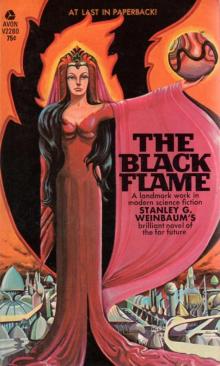 The Black Flame
The Black Flame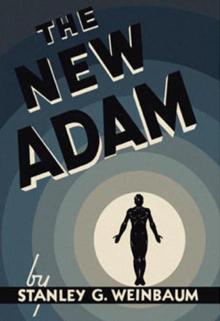 The New Adam
The New Adam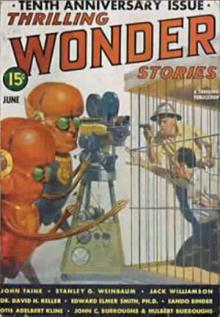 Dawn of Flame
Dawn of Flame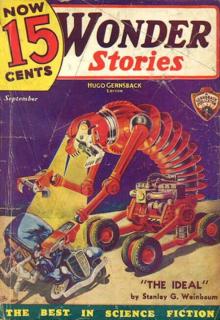 The Ideal
The Ideal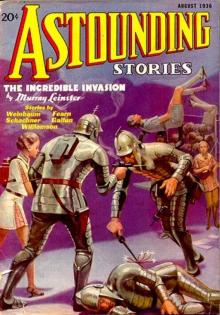 Proteus Island
Proteus Island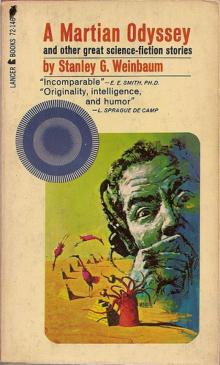 The Worlds of If
The Worlds of If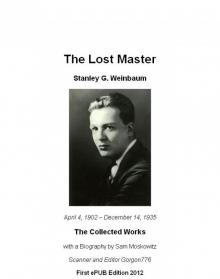 The Lost Master - The Collected Works
The Lost Master - The Collected Works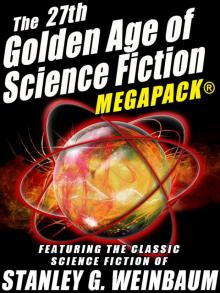 The 27th Golden Age of Science Fiction
The 27th Golden Age of Science Fiction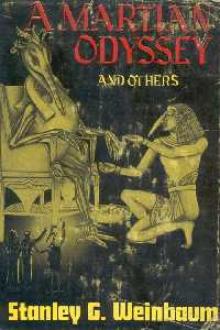 A Martian Odyssey
A Martian Odyssey Valley of Dreams
Valley of Dreams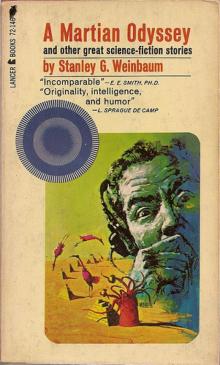 The Point of View
The Point of View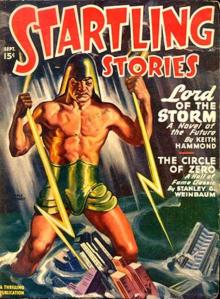 The Circle of Zero
The Circle of Zero